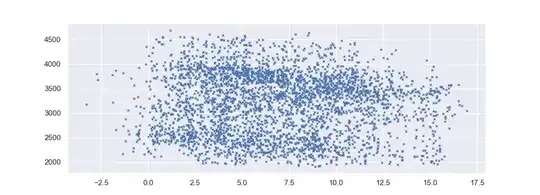I am currently doing a project on Load forecasting and it is known that in my country the temperature effects the load.
I have hourly readings of Load and Temperature from the period between 01-Oct-2014 to 01-Mar-2014. Using python I read in the data and plotted Load against Temperature and found that there was no correlation. I know that my data has been collected into the dataframe correctly. I wish to use weather as a variable in order to calculate the load for tomorrow, however I am unsure how this can be done if there is no correlation.
If it is 'known' that weather affects load but there is no visible correlation between them, are there any other ways where I can analyse the pattern between them in order to utilize weather in my load forecast, or does this mean that they are simply not related?
Below is my plot, Load on the y axis, in Mega-Watts and Temperature on the x axis, in degrees celcius.
Below is my code:
plt.plot('Temp','Load',data=df,linestyle='',marker='x',markersize=3)
